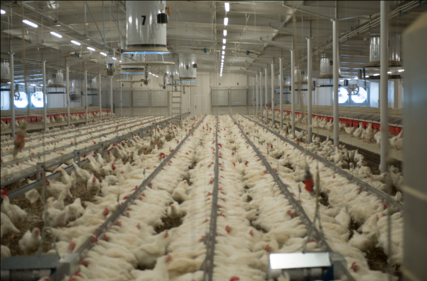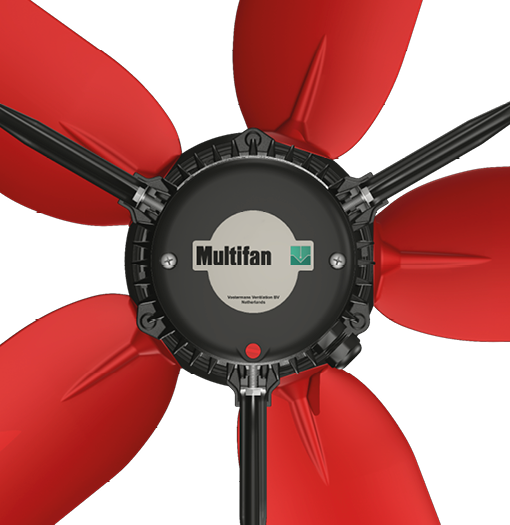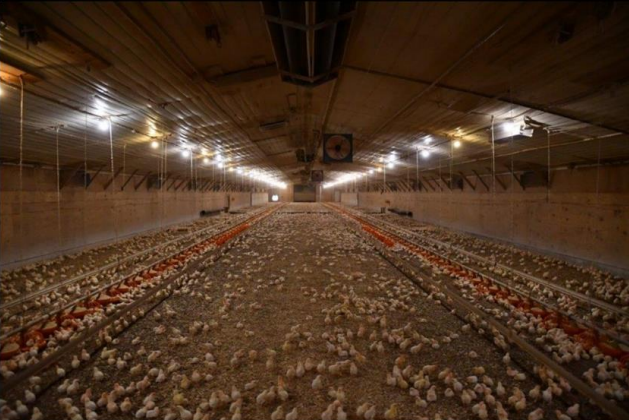Good ventilation in poultry barns takes care of an optimal temperature and air quality at animal level. The distribution of air and the air pattern (How the air enters the barn, spreads out and mixes) are very important for this.
When airflow and air patterns are arranged properly, the poultry can perform optimally. Diseases and issues such as respiratory problems, slowed growth, feet sole and heel issues, soiling, and higher dropout can be avoided.
Temperature
“Good ventilation has to be beneficial to the animals and suited to their needs (and not ours). The biggest misconception, I think, is that poultry farmers often think that it has to be cool in the barn. Because of this, they then ventilate as much as possible. However, cool often means cold. When caretakers find the climate pleasant, this doesn’t mean that chickens (especially chicks) also find is pleasant.” according to Mr. Henk Rodenboog, climate specialist and zoo technician at De Heus Voeders B.V.
Mature animals feel comfort between 20 and 27 degrees Celsius, but young animals experience this between 30 and 35 degrees. In that case the rule is: when we find it pleasant, it is too cold for the animals. Both coldness/draft as well as heat are disastrous for optimal performance (see our article on the relevance of a comfortable climate in poultry barns).
“A big additional misconception is that thermometers always indicate the right temperature. Sometimes they indeed do, but there is no existing thermometer that also includes wind speed to display the true apparent temperature. Often it is so that animals experience temperatures as colder than can be expected based on the measured temperature. Simultaneously this offers us many opportunities when it is very warm during the summer. Then, the animals can stay in their comfort zones longer than is expected by care takers. By using wind speed to repeatedly drive away heat from the skin of the animals, we can give them the sense that it is colder than it is in reality.”, as said by Henk Rodenboog.
Minimum and maximum ventilation
The minimum ventilation has to be sufficient. With the comfort zone of the animals, the ventilation amount must be increased to disperse the extra heat until the maximum ventilation is reached.
Related topic: Understanding minimum ventilation in poultry barns.
Henk Rodenboog: “For a long time, we assumed a maximum ventilation of 4 m3 airflow per kg of live weight in the barn. Because we nowadays have more peak days with hot temperatures, most poultry farmers like to have some extras at hand to use in those cases. The settings between minimum and maximum ventilation are quite critical and have to be precise. Besides refreshing the right amount of air, it is equally important to properly utilize the refreshed air. Placement of, and the amount of inlet valves are just as important for good ventilation.”
Fans and maintenance
Concerning ventilation, a good barn climate for optimal animal performance is not the only aspect for good company results. Also the investment and the costs of the ventilation system are important for the efficiency and must be manageable. This counts for both the initial investment as well as the energy consumption and the cost of maintenance.
Poorly maintained and dirty fans have a higher energy consumption and quickly lose flow rate (the amount of air being moved). Because of this, make sure to pay attention to the following for your poultry barn:
-The durability and reliability of the fans
-The suitability for intensive use
-The resistance against aggressive and corrosive circumstances
-Performance at negative pressure
De Heus is an internationally operating organization with the core activity of producing and marketing high-quality animal feed.




